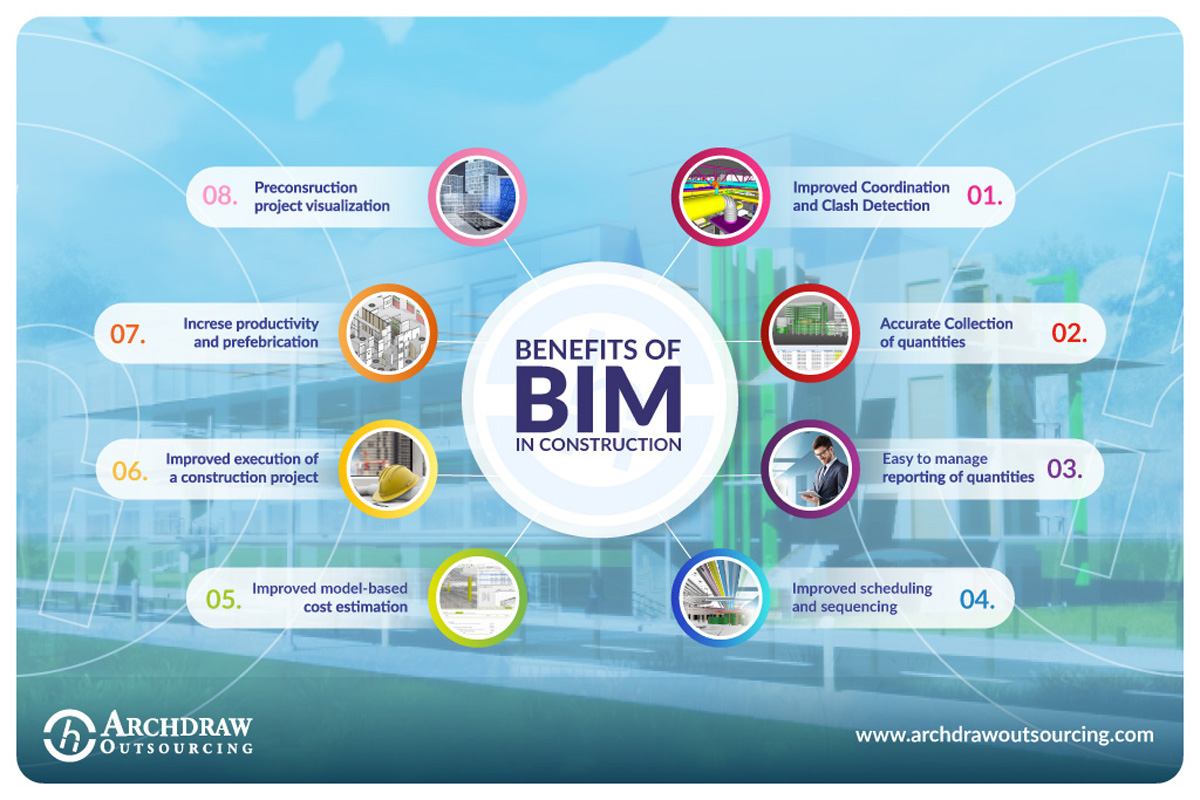The Benefits of BIM: Unlocking Efficiency and Collaboration
In today’s fast-paced construction industry, Building Information Modeling (BIM) has emerged as a powerful tool that revolutionizes the way projects are planned, designed, constructed, and managed. BIM brings together various stakeholders, including architects, engineers, contractors, and facility managers, to collaboratively work on a project from its inception to completion. This article explores the numerous benefits of BIM and how it can help you gain a competitive edge in the industry.
Enhanced Project Visualization
One of the key advantages of BIM is its ability to provide enhanced project visualization. Through the use of 3D models, stakeholders can gain a comprehensive understanding of the project’s design, spatial relationships, and aesthetics. This visual representation allows for better decision-making, as potential issues and clashes can be identified and resolved at an early stage, minimizing costly rework and delays.
Improved Collaboration and Communication
BIM acts as a central hub for project information, fostering improved collaboration and communication among team members. By providing a shared platform, BIM allows stakeholders to access and update project data in real time, ensuring everyone is working with the most up-to-date information. This seamless flow of information enhances coordination, reduces errors, and promotes efficient decision-making.
Efficient Design and Construction Processes
BIM streamlines the design and construction processes by enabling stakeholders to work concurrently on different aspects of the project. With BIM, architects can develop detailed 3D models that incorporate accurate data about building components and systems. This information-rich model not only aids in design exploration but also facilitates clash detection, clash resolution, and accurate quantity takeoffs. Contractors can leverage these models to plan construction sequencing, optimize resource allocation, and identify potential constructability issues before they arise.
Cost and Time Savings
Implementing BIM can result in significant cost and time savings throughout the project lifecycle. By identifying clashes and constructability issues early on, rework and change orders can be minimized, reducing project costs. The ability to visualize the project in detail allows for better planning, scheduling, and resource allocation, resulting in improved productivity and reduced construction time.
Improved Facility Management and Maintenance
BIM’s benefits extend beyond the construction phase and into facility management and maintenance. The detailed 3D models created during the design and construction phases can be leveraged to streamline facility management processes. By integrating asset information into the BIM model, facility managers can easily access crucial data such as equipment specifications, maintenance schedules, and warranty information. This enables proactive maintenance planning, reduces downtime, and extends the lifespan of building assets.

In conclusion, the benefits of BIM are vast and impactful. By embracing this technology, you can unlock efficiency, collaboration, and cost savings throughout the entire project lifecycle. From enhanced project visualization to improved facility management, BIM empowers stakeholders to make informed decisions, avoid costly errors, and deliver projects on time and within budget. Embrace the power of BIM and gain a competitive edge in the construction industry.
Frequently Asked Questions about the Benefits of BIM
1. What is BIM?
BIM stands for Building Information Modeling. It is a digital representation of the physical and functional characteristics of a building or infrastructure.
2. What are the main benefits of using BIM?
The main benefits of using BIM include improved collaboration, enhanced visualization, reduced errors, increased efficiency, and cost savings.
3. How does BIM improve collaboration?
BIM allows all project stakeholders to work on a single, shared model, facilitating better communication, coordination, and decision-making throughout the project lifecycle.
4. Can BIM help with project visualization?
Yes, BIM enables realistic 3D visualization, allowing stakeholders to better understand the design intent and make informed decisions about the project.
5. How does BIM reduce errors?
BIM enables clash detection and interference checking, helping to identify and resolve conflicts early in the design phase, and reducing errors and rework during construction.
6. In what ways does BIM increase efficiency?
BIM streamlines the design and construction process by automating repetitive tasks, enabling better coordination among disciplines, and providing accurate and up-to-date information for project teams.
7. Can BIM save costs?
Yes, BIM can help save costs by minimizing errors and rework, optimizing material quantities, improving resource allocation, and facilitating better project scheduling.
8. Does BIM support sustainability in construction?
Yes, BIM can support sustainability by analyzing energy performance, optimizing building systems, and facilitating the use of environmentally friendly materials during the design and construction phases.
9. What are the long-term benefits of implementing BIM?
The long-term benefits of implementing BIM include improved facility management, easier renovations and retrofits, better asset lifecycle management, and enhanced maintenance planning.
10. Is BIM widely adopted in the construction industry?
Yes, BIM has gained significant traction in the construction industry globally, with many countries and organizations mandating its use for public infrastructure projects.




